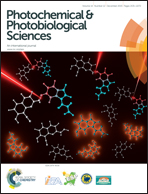A systematic review of the influence of skin pigmentation on changes in the concentrations of vitamin D and 25-hydroxyvitamin D in plasma/serum following experimental UV irradiation
Abstract
Defining whether skin pigmentation influences vitamin D photosynthesis is important for delivering accurate public health messages. Current evidence is contradictory. We undertook a systematic review of the published literature to examine the association between skin pigmentation and change in blood concentrations of vitamin D and 25-hydroxyvitamin D following experimental UV irradiation. Twelve studies fulfilled the inclusion criteria: human study in vivo with non-diseased participants; controlled artificial UV radiation; vitamin D or 25-hydroxyvitamin D measured in serum or plasma; full text in English. In seven studies, vitamin D photosynthesis was reduced in dark-skinned compared with fairer-skinned individuals. In the remaining five studies, only one of which was published after 1990, there was no difference in vitamin D photosynthesis according to skin type. The disparities in these results may be due to small sample sizes and variations in study methodology, including the source, dose and frequency of UV irradiation, phototype classification, and analysis of vitamin D and 25-hydroxyvitamin D. Of these, the spectrum emitted by the UV lamps may be significant. No study considered potential modifying factors, such as relevant genetic polymorphisms. On balance, we conclude that pigmented skin has less effective photoproduction of vitamin D and 25-hydroxyvitamin D. The quantity of sun exposure needed for dark-skinned, compared with light-skinned, people to achieve vitamin D sufficiency remains uncertain.


 Please wait while we load your content...
Please wait while we load your content...